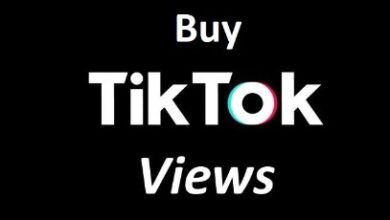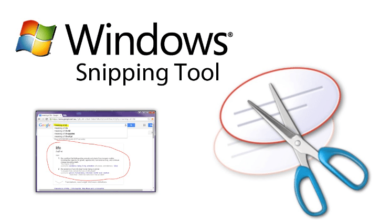Optimizing Call Center Performance with Microsoft Teams

Call center operations are evolving rapidly. Customers today expect seamless omnichannel experiences, quick resolution times, and personalized interactions. Meeting these demands requires call centers to modernize their technology stacks.
Microsoft Teams is transforming call centers by facilitating consistent customer experiences, streamlining operations, and providing data-driven insights. In this blog post, we’ll explore how Microsoft Teams optimizes call center efficiency, flexibility, and customer satisfaction.
The Role of Microsoft Teams in Modernizing Contact Centers
Most customers now prefer digital engagement channels over voice calls. Microsoft Teams empowers contact center support to deliver unified customer experiences across multiple touchpoints.
Seamless Omnichannel Interactions with Microsoft Teams
Microsoft Teams facilitates seamless omnichannel customer engagements across voice, video, chat, and messaging. This provides call center agents with complete contextual data on customers across channels, enabling consistent and personalized services.
Modular and Scalable Infrastructure
With its modular infrastructure, Microsoft Teams integrates easily with existing call center systems while enhancing:
- Efficiency – Intuitive interface minimizes agent ramp-up time by up to 50%. Automation routes call effectively.
- Security – Robust access controls and encryption safeguard customer data privacy.
- Flexibility – Scales on-demand to match call volumes. Enables remote contact center setup.
Built on Azure for Reliability and Innovation
By leveraging the trusted Azure cloud platform, Microsoft Teams offers enterprise-grade reliability, security, and compliance. Azure’s pace of innovation also allows call centers to pilot cutting-edge capabilities like AI assistants and predictive analytics through Microsoft Teams.
This modern foundation future-proofs call centers, allowing them to meet changing customer expectations.
In-House vs Cloud-Based Contact Centers
Gartner predicts the market for cloud-based contact center solutions will hit $19.8 billion by 2031. Should businesses choose in-house or cloud-based models?
| Parameter | In-House | Cloud-Based |
| Infrastructure Costs | Higher | Lower |
| Scalability | Limited | Elastic |
| Disaster Recovery | Complex | Inbuilt Business Continuity |
| Maintenance Efforts | Higher | Cloud Provider’s Responsibility |
Table 1: Comparing In-House and Cloud-Based Contact Centers
Cloud-based contact centers built on Microsoft Azure offer compelling advantages:
- Lower capital expenditure.
- Smooth pay-per-use scaling to manage spikes
- Minimized downtime risks increase customer satisfaction (CSAT).
With easier setup, maintenance, and resilience, cloud-based models maximize return on investment in call center infrastructure.
Enhancing Customer Experience with Microsoft Teams
Delivering satisfactory customer interactions is pivotal for contact centers. An Aspect survey states that 73% of consumers see valuing customer time as indicative of good service.
Microsoft Teams enriches customer experience by:
- Omnichannel Engagement – Seamless transitions across voice, video, chat, and SMS.
- Personalization – Integrated customer data prompts relevant, contextual interactions.
- Sentiment Analysis – AI detects emotions to guide agent responses.
- Post-call Surveys – Customer feedback identifies areas of improvement.
These capabilities optimize every customer touchpoint across various channels. Usage of Microsoft Teams drives first contact resolution rates. By meeting modern consumer expectations, Microsoft Teams unlocks immense value.
Advanced Features for Efficient Call Management
Contact centers aim to maximize agent productivity to achieve superior call resolution speeds. Microsoft Teams offers advanced functionalities like:
- Auto Attendants – Save hours through automated call routing.
- Call Queues – Distribute incoming calls evenly for prompt service.
- Voice-enabled Channels – Contextual discussions for complex issues.
Teams empower agents through collaboration and knowledge sharing, improving employee retention by 5%. These capabilities make Microsoft Teams an indispensable tool for optimizing call center operations.
Integrating AI and Analytics for Optimized Performance
Harnessing data is key to efficient workforce management and contextual customer interactions. Microsoft Teams enables:
- Proactive Insights – AI tools predict call volumes to align staffing. Reduces call abandon rates by a significant margin..
- Transcript Analysis – Sentiment detection, automatic note-taking assist agents.
- Customer Journey Mapping – Multi-channel analysis highlights service gaps.
By extracting value from data, Teams enable data-driven decisions for call centers. It empowers organizations to deliver effortless customer experiences at scale.
Read also A Guide for Sleep-Seekers with Sound Sensitivities
The Future of Contact Centers with Microsoft
The realm of call center technology is on the brink of a revolutionary transformation, and at the forefront of this evolution is Microsoft Teams’ low-code extensibility. This innovative approach is poised to drive rapid and adaptive advancements within call centers, paving the way for unparalleled innovation and efficiency. Analysts are anticipating that by 2025, more than half of contact centers will have embraced AI, marking a significant shift in operational paradigms.
- Rapid Innovation: The low-code extensibility of Microsoft Teams accelerates the pace of innovation within call centers. This approach empowers developers and non-developers alike to create custom solutions, automate workflows, and introduce new functionalities without the need for extensive coding. This agility fosters a culture of continuous improvement and enables call centers to swiftly adapt to changing demands.
Cutting-Edge Capabilities:
- Conversational AI Assistants: Microsoft Teams, through low-code extensibility, enables the implementation of conversational AI assistants. These virtual assistants automate repetitive tasks, guide agents through complex processes, and enhance overall operational efficiency. By offloading routine tasks, agents can focus on more value-added interactions with customers.
- Predictive Recommendations: The integration of predictive AI capabilities empowers call centers to proactively address emerging issues. By analyzing historical data and patterns, AI systems can offer predictive recommendations to agents, enabling them to anticipate customer needs, resolve issues before they escalate, and even trigger callbacks for personalized follow-up.
- Continuous Evolution: The integration of these cutting-edge capabilities within Microsoft Teams positions the platform as a catalyst for the future evolution of contact centers. It heralds an era where AI-driven solutions seamlessly integrate into daily operations, enhancing customer interactions, boosting agent productivity, and driving overall operational excellence.
- Adaptive Solutions: Microsoft Teams’ low-code extensibility ensures that call centers can adapt their solutions in real-time to meet evolving customer expectations and industry trends. This adaptability is crucial in an era where technological advancements and customer preferences are in constant flux.
In essence, the convergence of Microsoft Teams’ low-code extensibility with the transformative capabilities of AI, especially within the secure confines of Microsoft Azure, signifies a paradigm shift in call center technology. This synergy empowers call centers to embrace a future where innovation is not constrained by technical complexities.
Final Takeaway
In the dynamic landscape of call centers, where customer engagements, operational efficiency, and actionable insights reign supreme, Microsoft Teams emerges as a transformative game-changer. This platform, fortified with enterprise-grade security, compliance features, and a future-ready roadmap, has the unparalleled capacity to elevate call centers from mere cost centers to modern revenue drivers.
By embracing its capabilities, call center leaders can elevate their operations, foster enriched customer engagements, and position their teams for success in the ever-evolving landscape of customer service. Now is the time for call center leaders to unlock the transformative potential within Microsoft Teams and reshape their narrative from cost centers to modern revenue drivers. The era of empowered call center operations has arrived, and Microsoft Teams is at the forefront of this transformative journey.
Frequently Asked Questions (FAQs)
How does Microsoft Teams enhance call center efficiency?
Microsoft Teams boosts productivity through AI-based automation, easier collaboration tools, integrated data, and reduced infrastructure costs. This allows call centers to improve first-call resolution rates.
What are the differences between old and Microsoft Teams call centers?
Key differences include – unified omnichannel experiences, lower operational costs, inbuilt business continuity of cloud models, advanced functionalities like auto attendants and call queues, deeper customer journey insights through AI, and better agent engagement models.
How can Microsoft Teams improve call center customer satisfaction?
Capabilities like omnichannel engagement, sentiment analysis to guide agent responses, post-call surveys, and proactive analytics optimize customer interactions across channels. This results in higher first-contact resolutions, net promoter scores, and decreased abandon rates – elevating customer satisfaction.




